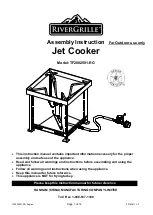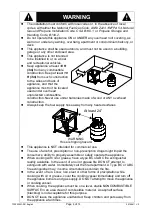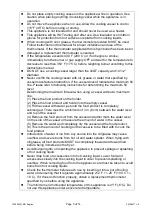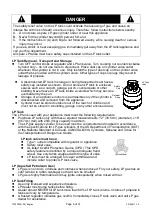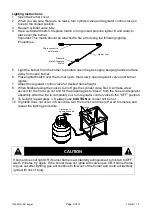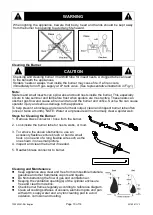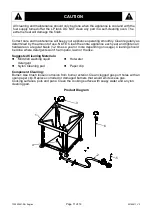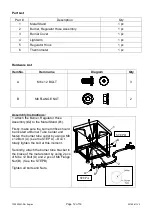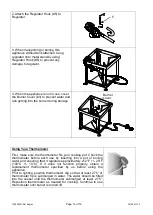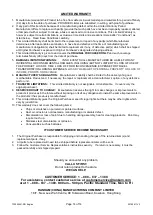
TF2002501-RG English
Page 7 of 14
20190611 V.2
Do not release liquid propane (LP) gas into the atmosphere. This is a hazardous practice.
To remove gas from LP tank, contact an LP dealer or call a local fire department for
assistance. Check the telephone directory under
“GAS Companies” for nearest certified LP
dealers.
LP Tank Exchange
Many retailers that sell appliances offer you the option of replacing your empty LP tanks
through an exchange service, Use only those reputable exchange companies that inspect,
precision fill, test and certify their cylinders. Exchange your tank only for an OPD safety
feature-
equipped tanks as described in the “LP Tank” section of this manual.
Always keep new and exchanged LP tanks in upright position during use, transit or
storage.
Leak test new and exchanged LP tanks BEFORE connecting to appliance.
LP Tank Leak Test
For your safety
Leak test must be repeated each time LP tank is exchanged or
refilled.
Do not smoke during leak test.
Do not use an open flame to check for gas leaks.
Appliance must be leak checked outdoors in well-ventilated area,
away from open flames or sparks.
Use a clean paint brush and 50/50 soap and water solution.
Use mild soap and water. Do not use household cleaning agents.
Damage to gas train
components can result.
Brush soapy solution onto all metal seams and entire valve area.
Hose Check
Before each use, check to see if there is evidence of abrasion, wear, cuts or leaks, the
hose must be replaced prior to the appliance being put into operation. The replacement
hose assembly must be that specified by the manufacturers.
WARNING
If “growing” bubbles appear, do not use or move the LP tank. Contact an LP gas supplier
or your fire department.
Connecting Regulator to the LP Tank
1. Place LP tank on a secure, level, and stable surface.
2. Turn control knob to the OFF position.
3. Turn LP tank OFF by turning hand wheel clockwise to a
full
stop
.
4. Remove the protective cap from the LP tank valve. Always use
cap and strap supplied with valve.
5. Hold regulator, insert nipple (B) into LP tank valve. Hand tighten coupling nut, holding
regulator in a straight line (C) with LP tank valve so as not to cross thread the connection.
Do not use a POL transport plug
(A) (plastic part with external
threads)! It will defeat the safety
feature of the valve.
Regulator
Nipple must be
centered into
the LP tank
valve
B
Hold coupling nut and regulator as
shown for proper connection to LP
tank
valve
C
Coupling nut

